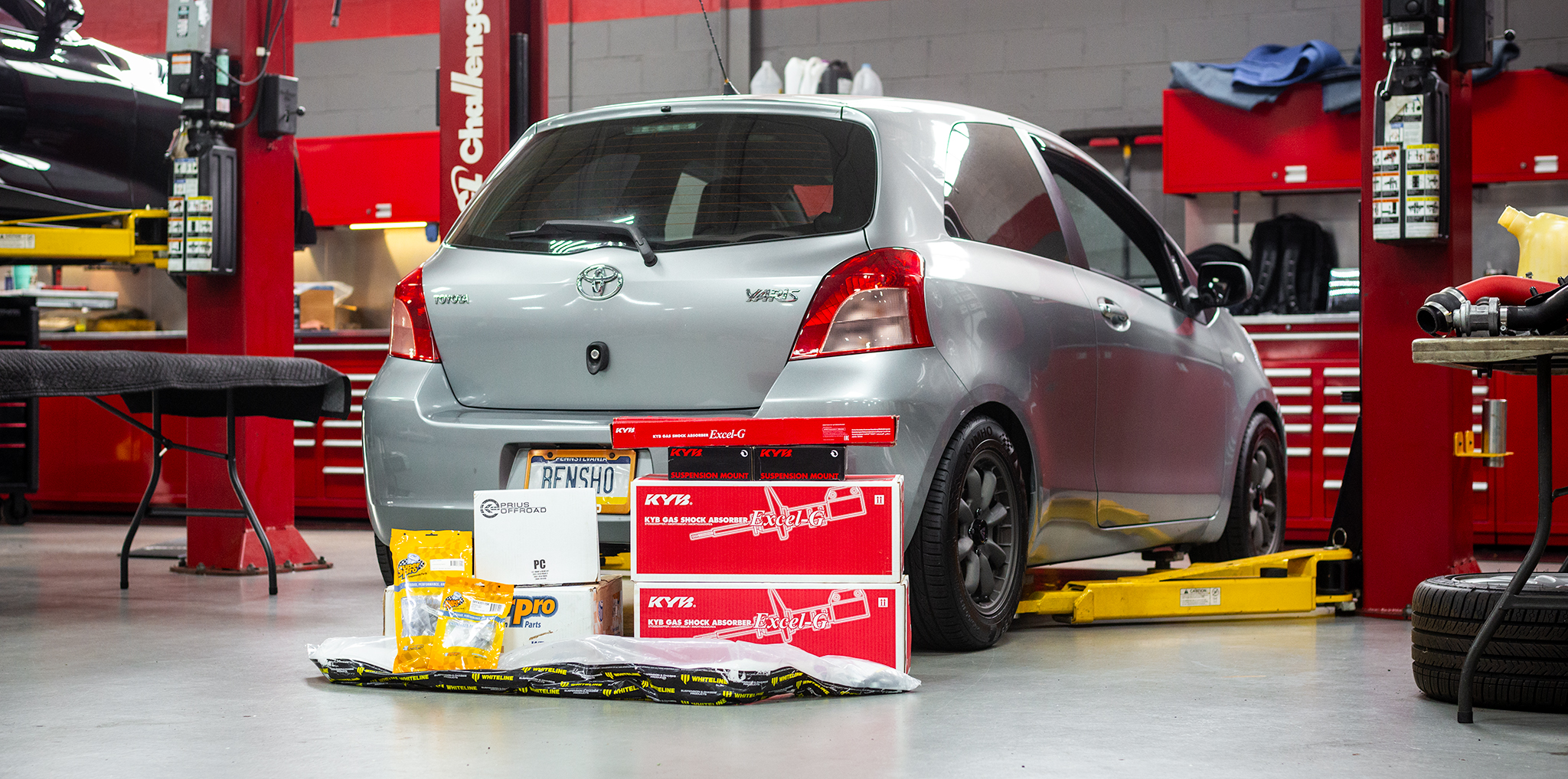- Fit for any style of Subaru EJ engine, this performance damper from Fluidampr is a high-quality solution.
- Unlike rubber-based dampers, this SFI 18.1 certified, made in the USA Fluidampr automatically adapts to engine modifications.
The internal combustion engine is magnificent but finicky. Conceptualizing the way it generates power makes sense at a basic level, but the sheer number of pieces moving inside makes it much more complicated in reality. In factory configuration, the rotating assembly within an engine will function correctly. However, once modifications are introduced, operating side effects like crankshaft torsional vibrations will begin vying to wreak havoc on those same engine internals — but there is a solution! Enter Fluidampr. Since the mid-’80s, the company has been implementing durable viscous damping technology into motorsports and producing high-quality solutions for everyone from factory-backed teams to grassroots racers.
THE SUBJECT IN QUESTION
Owned by the highly skilled motorsports and automotive photographer Louis Yio, this 1998 GC8 Subaru Impreza is far from stock. He’s named it “#ProjectBunta” after the iconic father of Takumi Fujiwara in the hit Japanese manga and anime series Initial D, but Louis’ car has such a wild history that the roots of its nickname dive deeper than any manga character. Without diverging too far off course from our technical story today, Louis bought it as a stock 2.5RS from the renowned Steph Papadakis, but it needed some TLC. So he enlisted the help of shop owner Tsukasa Gushi, the father and driving teacher of professional drifter Ken Gushi. In a somewhat serendipitous fashion, Louis found out Tsukasa previously owned his exact car — a real-life Bunta Fujiwara at this point (owned a GC8 and taught his son to drift)! Since taking ownership, Louis has changed quite a bit on the vehicle. The most notable feature is the 300hp turbocharged 2005 STI engine now situated in the bay.
ABOUT THE DAMPER
Weighing in at a scant 6.9 pounds static and only 4.6 while rotating, this precision CNC-machined steel Subaru EJ engine Fluidampr is manufactured in an ISO 9001:2015 rated facility and SFI 18.1 certified for safety. The black zinc chromate finish prevents corrosion and looks right at home in a factory or tuned engine bay. The highly visible, engraved SFI markings and part number provide clarity, while the TDC marking ensures accuracy once installed. It maintains the same grooves and pulley size as the factory component, so don’t worry about adjusting belt lengths. Lastly, this viscous damper constantly self-tunes in real-time to protect across the entire rev range and is made in the USA.
DAMPER ON A SUBARU?!
Thanks to their layout, horizontally-opposed engines like the Boxer engine in Subarus are about as balanced as possible. They’re typically internally balanced or have no unbalanced forces, so owners think they don’t need to upgrade the factory harmonic balancer. However, a damper doesn’t deal with the engine’s balance. As horsepower levels and rev range increase, the factory piece will need upgrading for improved protection from torsional vibrations. OE harmonic balancers are usually suitable for up to 50Hz range. Equipping a Fluidampr keeps any unwanted harmonic vibrations in check, will prolong the crankshaft’s life, and help prevent any failures of other key components such as engine bearings and oil pump gears.
THE INSTALLATION
Like any other modification, we begin the Fluidampr installation process at his friend’s garage, prepping the workspace and removing the factory pieces. First off, they drained the engine’s coolant to enable the removal of the radiator and fans. This step provides easy access to the belts and pulleys located at the front of the engine. Next, they loosened both belt tensioners, removed the belts, and used a breaker bar to remove the factory crankshaft pulley.
If it weren’t for this next phase of the installation, the whole process would already be half completed. Still, it’s not much of an intense step, but it is a necessity — trimming the timing cover. Fluidampr includes fully detailed instructions with the damper for this step. With the factory balancer removed, the timing cover must also be removed, then follow the directions and either grind, cut, or trim the lip of the timing cover to sit flush with the rest of the piece’s surface. This relief allows clearance for the back of the Fluidampr.
With the trimmed timing cover back in place, it was time to reverse the previous steps with the addition of the new Fluidampr. The single keyway and engraved timing mark on it make alignment easy. Once in place, they torqued the Fluidampr to spec (either 95 lb-ft or 130 lb-ft, for USDM and JDM, respectively) as the factory service manual recommends.
FINISHING UP
This is an appropriate time to replace any old or worn belts, and that’s precisely what Louis and his friend did. With the new belts routed, they tightened the tensioners, re-installed the radiator and fans, connected the hoses, bled the coolant system, and appreciated a job well done. If you recall, there is no tuning or maintenance required with this piece — if you needed any more positives.

Now equipped with a viscous damper, #ProjectBunta, the GC8 RSTI, is ready for further enhancement without any threat of torsional crankshaft vibrations causing worry. As you may have noticed, this is an effortless installation. Provided you have some mechanical knowledge, a brief amount of time and some elbow grease will protect your crankshaft for years. If you have a Subaru with an EJ engine with any modifications that increased your RPM range or torque output, or if you’re interested in finding out more information about the world of Fluidampr products, visit the company’s website and social media.








































































